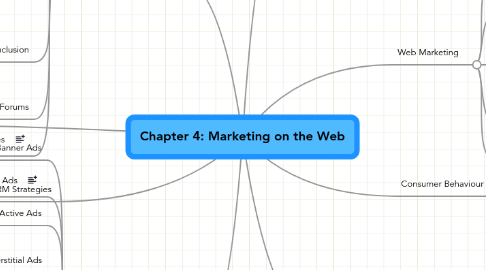Chapter 4: Marketing on the Web
作者:mike shaw


1. Search Engine Strategies
1.1. Search Engines
1.1.1. Spider, Crawler, Robot
1.1.2. Index or Database
1.1.3. Search Front-End
1.2. Web Directories
1.3. Search Engine Optimization for Keywords
1.3.1. Long Tail Keywords
1.3.2. HitTailing Demo
1.3.3. SEO Digger
1.3.4. DO's and Don'ts
1.4. Paid Inclusion
1.4.1. Google Adwors
1.4.2. Yahoo! Search Marketing
1.4.3. MSN adCentre
1.5. Blogs, Social Media Sites, Forums
1.6. Website Domain Names
2. Branding Strategies
2.1. Leveraging and Consolidation
2.2. Affiliate Marketing
2.3. Viral Marketing
3. E-Mail and CRM Strategies
3.1. Permission Marketing
3.2. Content and Advertising
3.3. Outsourcing Processing
3.4. eCRM solutions
4. Advertising Strategies
4.1. Banner Ads
4.2. Pop-up Ads
4.3. Active Ads
4.4. Interstitial Ads
4.4.1. Audio
4.4.2. Video
4.5. Site Sponsorship
4.6. Problems - Measuring Effectiveness
4.6.1. Page Visit
4.6.2. Page Views
4.6.3. Ad View
4.6.4. Impression
4.6.5. Click-Through
4.6.6. Purchase
5. 7 pages every webpage should have
5.1. Contact Us
5.2. Customer Testimonials/Stories
5.3. Privacy Policy
5.4. FAQ Frequently Asked Questions
5.5. A "gimme" page
5.6. About Us
5.7. Confirmation
6. Web Marketing
6.1. Product based strategies
6.2. Customer based strategies
6.3. Trust and Media Selection
6.3.1. Mass Media
6.3.2. Personal Contact/Media
6.4. MArket Segmentation
6.5. The Long Tail
7. Consumer Behaviour
7.1. Segmentation
7.1.1. Browsers
7.1.2. Shoppers
7.1.3. Buyers
7.2. Relationship Marketing
7.2.1. Awareness
7.2.2. Exploration
7.2.3. Familiarity
7.2.4. Commitment
7.2.5. Separation
